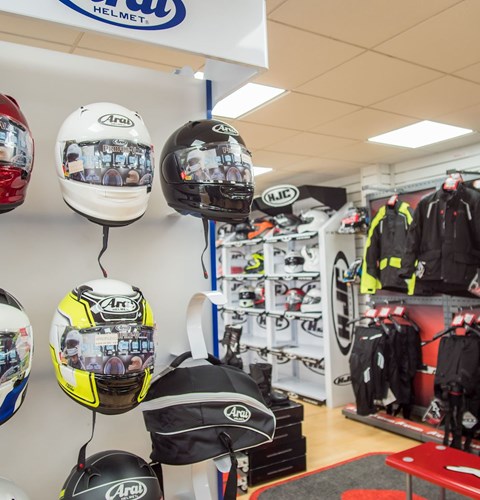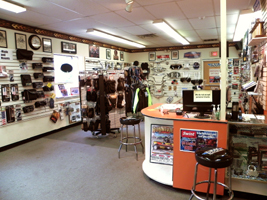Find Competitive Rates on Motocross Parts NZ for every single Bike
Find Competitive Rates on Motocross Parts NZ for every single Bike
Blog Article
Grasping Motorbike Gears: Exactly How to Optimize Your Riding Experience
In the realm of motorcycling, understanding the art of gear manipulation is critical for boosting your riding efficiency. Appropriately comprehending and utilizing bike equipments can dramatically impact control, gas, and velocity efficiency, changing an average adventure right into a smooth, exhilarating trip. By incorporating precise shift timing and adapting gear choice to numerous roadway conditions, cyclists can guarantee ideal engine performance and safety and security. The nuances of clutch control, throttle coordination, and equipment mechanics beckon a deeper expedition, assuring to unlock the complete potential of your maker. How can these methods be used to truly enhance your riding experience?
Recognizing Equipment Mechanics
Exactly how do the ins and outs of gear mechanics affect motorbike performance? At the core of motorcycle dynamics, gear mechanics play a critical duty in converting engine power into movement, ultimately dictating speed and control. Gears, carefully crafted components, allow riders to maximize torque and rate, making sure a seamless transition via different surfaces and speeds. The gear proportions, carefully created, identify the relationship in between engine revolutions and wheel turns, affecting acceleration and gas efficiency.
Comprehending equipment mechanics starts with recognizing the relevance of the gearbox, which houses numerous gears of differing sizes. These equipments interact through a procedure understood as meshing, where teeth of various gears involve to send power. The precision of this interaction is vital; any misalignment or damage can cause ineffective power transfer, hindering efficiency. Furthermore, the setup and size of gears affect the bike's ability to take care of different loads and rates.
In addition, the concept of gear moving is indispensable to optimizing efficiency. Smooth and timely changes ensure that the engine operates within its ideal power band, protecting against unnecessary pressure and improving durability (moto parts nz). By comprehending these mechanical ins and outs, cyclists can accomplish an unified blend of power, efficiency, and control, elevating their riding experience
Timing Your Changes
Change timing proficiency is necessary for maximizing motorcycle efficiency and enhancing the riding experience. Effectively timed changes make sure that the engine operates within its optimal power band, which is crucial for maintaining control, attaining smooth velocity, and making sure the longevity of the motorbike. Cyclists have to establish an intuitive feeling of when to change gears, which involves comprehending the relationship in between engine changes per minute (RPM) and rate.
To master change timing, pay close interest to the engine's sound and really feel, as these supply important ideas concerning when to change gears. When the engine approaches the top variety of its power band without getting to the redline, the perfect change point usually occurs - motocross parts nz. Moving prematurely can bring about a lack of power, while moving far too late may create unnecessary engine stress
Additionally, road conditions and riding style influence change timing. In comparison, throughout highway riding, fewer shifts at higher speeds can be a lot more ideal.
Enhancing Fuel Efficiency
While grasping motorbike gears is vital for efficiency, boosting fuel performance is equally essential for both ecological and financial factors. Optimum gas intake not only decreases functional prices but additionally minimizes the ecological footprint of riding. To attain this, one must understand the detailed partnership in between equipment choice and engine performance.
Firstly, selecting the right equipment at ideal rates can substantially affect fuel consumption. Riding in a greater gear at reduced speeds can result in engine lugging, which is detrimental to both gas economic situation and engine wellness. On the other hand, riding in reduced gears at broadband leads to unneeded gas usage. Therefore, keeping an optimal equilibrium by shifting gears abreast with road conditions and expected maneuvers is necessary.
Additionally, regular maintenance plays a crucial duty in gas performance. Guaranteeing that the motorbike is well-tuned, with clean air filters and effectively pumped up tires, can lower and boost aerodynamics gas wastage. In addition, taking on a riding design that embraces steady velocity and smooth deceleration can add to much better fuel economy.

Strategies for Smooth Transitions
Attaining smooth gear changes is basic to improving the riding experience and making certain the longevity of a bike's transmission system. Appropriate gear shifting not just adds to a smooth ride yet also reduces wear and tear on the mechanical parts. To grasp the art of smooth transitions, riders have to focus on a few vital strategies.

Second of all, clutch control plays a crucial duty. Engaging and disengaging the clutch efficiently requires technique. The clutch bar should be launched gradually, permitting a smooth transfer of power from the engine to the wheels without causing a jolt or sudden activity.

Adapting to Roadway Conditions
Browsing diverse roadway conditions is an essential ability for any motorcyclist intending to maintain control and safety. Whether you're riding on wet surfaces, gravel roadways, or browsing sharp turns, your ability to adapt your gear use and riding technique is critical. Recognizing exactly how to readjust your gears appropriately can significantly impact traction and stability, guaranteeing a safer journey.
On wet roadways, it is recommended to maintain higher gears to reduce torque and lessen wheel spin. This approach assists keep hold on unsafe surfaces, permitting smoother velocity my website and deceleration. In comparison, when riding on crushed rock or irregular terrain, reduced gears are better. Lower gears provide much better control and permit you to react even more quickly to unforeseen changes in the road surface.
Sharp contours demand precise gear monitoring to balance rate and control. Downshifting prior to entering a curve can help keep energy while making certain the motorcycle remains stable throughout the turn. Consistent method in diverse problems enhances your capability to forecast and respond to modifications in roadway texture and incline.
Conclusion
Understanding bike gears significantly boosts the riding experience by boosting control, acceleration, and fuel efficiency. Adjusting gear choice to various roadway conditions, such as making use of greater gears on damp surface areas and reduced gears on gravel, more improves handling and security.
Recognizing gear auto mechanics starts with acknowledging the importance of the transmission, which houses numerous gears of differing dimensions. These equipments engage via a procedure known as meshing, where teeth of various gears involve to transmit power (mx gear nz). Gentle changes to the throttle during gear changes can avoid jerky activities and maintain a constant riding pace
Whether you're riding on wet surface areas, gravel roads, or browsing sharp turns, your capacity to adapt your equipment use and riding technique is extremely important. Adapting gear option to various road problems, such as making use of higher gears on damp surface areas and lower gears on gravel, more enhances handling and security.
Report this page